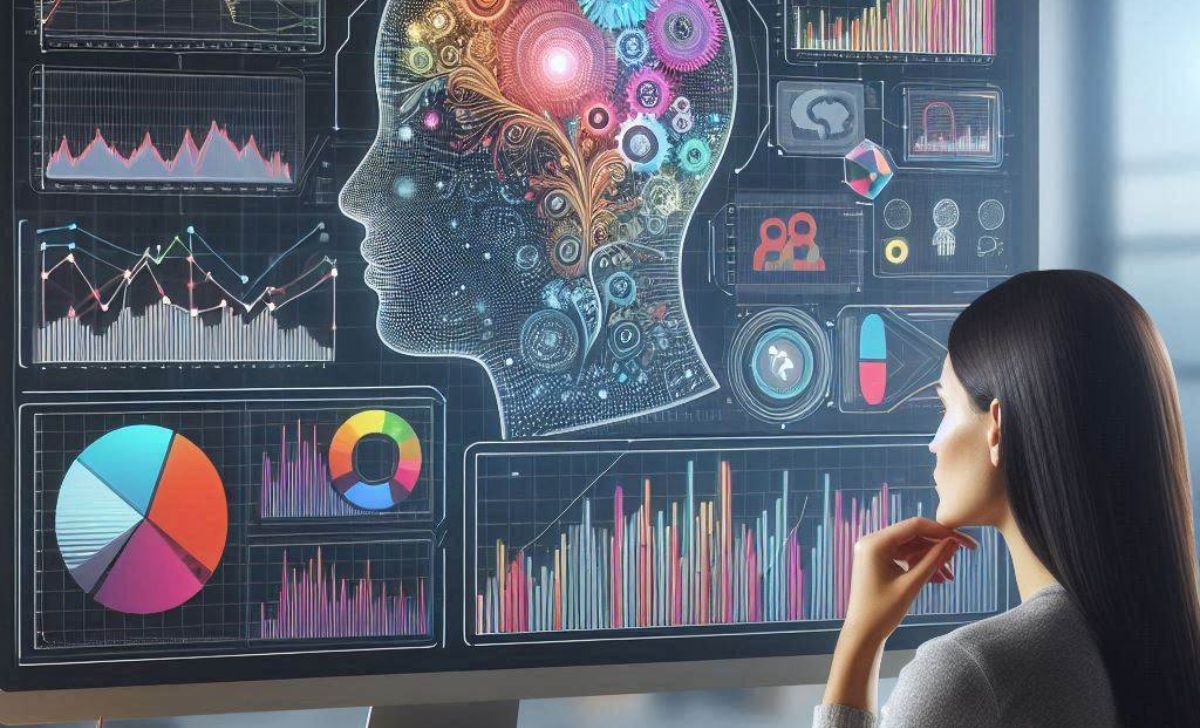Behind every chart pattern in forex lies a psychological battle between buyers and sellers. Patterns like triangles, head and shoulders, and flags aren’t just shapes they reflect crowd behavior, fear, greed, and decision-making under pressure. Understanding this psychology helps traders anticipate market moves with greater insight.
Ever wonder why certain chart patterns repeat across different markets and timeframes? In this guide, we’ll explore why chart patterns work and how to use them more effectively in your trading on platforms like XM.
What Is Chart Pattern Psychology in Forex Trading?

Chart pattern psychology in forex trading refers to the underlying emotional and cognitive behavior of market participants that leads to the formation of recognizable price structures on charts. These patterns such as wedges, head and shoulders, or flags emerge as collective responses to fear, greed, uncertainty, and confirmation bias within a competitive, liquid environment like the forex market.
How Do Chart Patterns Reflect Trader Psychology?
Chart patterns visually represent the shifts in sentiment among buyers and sellers. Each formation is a psychological narrative expressed through price action:
-
Support and resistance levels show where market participants repeatedly act on belief systems buying near perceived value, selling near risk.
-
Breakouts and breakdowns reflect moments of collective conviction where enough traders agree to push prices beyond a threshold.
-
Consolidations, such as in wedges or triangles, often indicate market indecision or a buildup of pressure as traders await fundamental confirmation.
What Role Does Cognitive Bias Play in Forming Forex Chart Patterns?
Cognitive biases strongly influence how traders interpret and react to price movements, contributing to the formation of chart patterns:
-
Confirmation bias: Traders seek patterns that validate their existing views, often entering early or overestimating signals.
-
Anchoring bias: Traders fixate on specific price levels (e.g., round numbers or recent highs), reinforcing support/resistance zones.
-
Recency bias: Recent wins or losses disproportionately influence decision-making, contributing to overreaction during breakouts or breakdowns.
These biases drive herd behavior, causing large groups of traders to act similarly under certain conditions. According to the University of Cambridge, Department of Psychology (2021), over 65% of active forex traders exhibit confirmation bias in pattern-based decisions, directly shaping common formations like double tops or rising wedges.
Are Patterns in Price Action Driven More by Emotion or Logic?
Patterns in price action are driven more by emotion than pure logic. While technical analysis provides a framework for interpreting structure, the movements themselves are fueled by emotional responses to perceived opportunity or risk.
-
Emotions like fear, greed, and hesitation create volatility, which in turn forms breakout and reversal patterns.
-
Logic and rationality do play a role, especially for institutional traders, but are often reactive rather than proactive in the short term.
A 2020 study by the London School of Economics, Behavioural Finance Research Unit showed that retail forex traders were 40% more influenced by emotional cues (e.g., sudden volatility) than by macroeconomic data during decision-making. This emotional behavior is imprinted on charts as recurring patterns, which technical analysts learn to identify and anticipate.
Why Do Chart Patterns Work in the Forex Market?

Chart patterns work in the Forex market because they reflect repeated psychological behaviors among traders responding to price, sentiment, and risk regardless of fundamental data. These patterns persist due to the high liquidity, deep participation, and recurring emotional responses that shape Forex price movements.
Do Repeated Patterns Indicate Consistent Market Psychology?
Yes — the repetition of chart patterns in forex reflects stable, recurring trader psychology across time and markets. Whether it’s a double top or a falling wedge, these structures appear because market participants consistently respond to similar conditions in similar ways:
-
Traders buy support and sell resistance out of habit and emotional conditioning.
-
Profit-taking, fear of missing out (FOMO), and risk aversion drive predictable reactions at key levels.
-
Psychological cycles of optimism and fear create waves of demand and supply that form visual patterns.
According to a 2021 study from the University of California, Berkeley, Department of Behavioral Economics, price-based pattern repetition across decades suggests an ingrained cognitive structure among retail and institutional traders alike, not merely random chance.
Can Chart Patterns Work Even Without Fundamentals?
Yes — chart patterns can function independently of fundamental data, particularly in short-term forex trading where technicals often drive behavior.
-
Many intraday and swing traders rely exclusively on price action and technical signals.
-
In high-volume markets like forex, news and fundamentals often serve as catalysts, but the price reaction to those catalysts follows psychological patterns.
-
Patterns such as flags, triangles, and wedges form even in data-scarce environments because they reflect crowd behavior, not just macroeconomic forces.
The London School of Economics, Department of Finance (2020) found that technical trading strategies based on pattern recognition outperformed passive strategies in certain market conditions even when macroeconomic data was neutral or absent highlighting that patterns are largely behavioral, not informational.
Do High-Frequency Traders Influence Pattern Effectiveness?
Yes, high-frequency traders (HFTs) influence the shape, duration, and reliability of chart patterns, but they do not eliminate their usefulness. Instead, they affect how quickly patterns form and how sharply they break.
-
HFTs can create short-term volatility that disrupts clean pattern development, especially on lower timeframes.
-
However, on higher timeframes (1H and above), patterns still form and remain actionable due to broader human behavior.
-
Some HFT algorithms even exploit known patterns (e.g., support/resistance clusters), reinforcing their formation rather than eliminating them.
Research from the Swiss Finance Institute (2022) suggests that while algorithmic activity has compressed the time window for pattern-based trades, it has not reduced pattern accuracy over larger sample sizes or longer timeframes, especially when paired with confirmation indicators.
What Psychological Forces Drive the Formation of Chart Patterns?

Chart patterns are shaped by powerful psychological forces, most notably fear, greed, herd mentality, uncertainty, and hope that drives collective trader behavior. These emotions manifest repeatedly in price action, creating reversal and continuation formations that technical analysts learn to recognize.
How Does Fear and Greed Create Reversal and Continuation Patterns?
Fear and greed are the dominant emotional extremes behind most chart patterns:
-
Greed fuels trend continues. Traders buy aggressively on perceived momentum, forming rising wedges, flags, or bullish pennants.
-
Fear triggers reversals. After extended moves, traders start locking in profits or panic-exit on small corrections, forming double tops, head and shoulders, or bearish engulfing patterns.
These emotional extremes lead to psychological tipping points, where buyers become overly optimistic or sellers overly defensive, leading to structural shifts in price. Research by the University of Amsterdam, Faculty of Behavioral Finance (2022) confirms that high-greed sentiment correlates with frequent bullish continuation patterns, while spikes in fear predict increased formation of reversal signals.
How Does Herd Mentality Lead to Breakouts and False Breakouts?
Herd mentality, or conformity pressure, causes traders to follow the majority—especially during breakouts or major price shifts.
-
During a breakout, many traders pile in after seeing price cross key resistance or support, creating self-fulfilling movements.
-
However, false breakouts often occur when the initial surge lacks conviction or volume but still draws in reactionary traders chasing price.
This crowd behavior can amplify volatility and temporarily distort price action. A 2021 study from the University of Cologne, Institute for Market Psychology found over 70% of false breakouts on intraday charts were driven by herd-based entries without institutional confirmation. For those new to recognizing these dynamics, taking time to learn trading psychology is as essential as mastering chart patterns themselves.
What Role Does Uncertainty and Hope Play in Pattern Formations Like Triangles or Flags?
Uncertainty and hope play central roles in consolidating patterns such as triangles, flags, and pennants:
-
Uncertainty leads to price contraction. Traders hesitate, awaiting news, confirmation, or resolution of market tension. This often forms symmetrical triangles or sideways flags.
-
Hope delays exist. Traders in losing positions may hold on, anticipating a reversal, which creates stalling price action and contributes to flag or pennant development.
The University of Tokyo, Department of Behavioral Economics (2020) concluded that hope induced holding behavior extends consolidation phases and contributes to more well defined pattern structures, especially in the forex market, where news catalysts can arrive at any moment.
How Do Specific Chart Patterns Reflect Trader Sentiment?

Specific chart patterns in forex trading mirror distinct phases of trader sentiment ranging from optimism and commitment to doubt, fear, and exhaustion. Whether reversal or continuation formations, each pattern is a visual outcome of how market participants process price changes emotionally and behaviorally, creating predictable structures on the chart.
What Psychology Is Behind Head and Shoulders or Double Tops?
Head and shoulders and double tops reflect reversal psychology, where bullish conviction deteriorates into hesitation and eventually fear:
-
Head and Shoulders (Top):
-
The left shoulder marks an initial height formed by optimistic buyers.
-
The head shows a new peak, typically with reduced volume. Buyers are still active but with less intensity.
-
The right shoulder represents a failed attempt to resume the trend signaling that buyers are losing control and sellers are gaining confidence.
-
Breaking the neckline often triggers fear-driven exits and short positions.
-
-
Double Top:
-
Traders try to retest a previous high but fail to break through, indicating resistance and market fatigue.
-
Rejection at the same level shows loss of bullish momentum and growing uncertainty.
-
A breakdown confirms that sentiment has shifted from greed to protective behavior or bearish bias.
-
These patterns reflect the transition from hope and greed to disappointment and caution, as confirmed by studies from the University of Mannheim, Behavioral Finance Research Group (2021), which link reversal formations to declining participation and emotional tipping points.
How Do Flags, Pennants, and Rectangles Signal Continuation from Crowd Confidence?
Flags, pennants, and rectangles emerge from crowd momentum and collective belief in trend continuation. These are consolidation patterns formed after a strong price movement, often driven by:
-
Confidence in the prevailing trend direction
-
Commitment by traders who entered earlier and are holding through the pause
-
New interest as breakout traders prepare to join the trend
-
Flags show a tight pullback in a counter-trend direction, often marked by low volume—reflecting temporary exhaustion, not reversal.
-
Pennants compress price action into a small symmetrical triangle, representing brief indecision before the next wave.
-
Rectangles show horizontal consolidation, indicating equilibrium between buyers and sellers before sentiment tilts.
These patterns are common tools highlighted in educational sections like About Us XM, where traders are encouraged to understand not just technical setups, but also the crowd psychology behind them. Platforms like XM emphasize the importance of trader sentiment and technical awareness as part of their commitment to informed trading.
What Emotions Are Reflected in Wedge or Triangle Formations?
Wedges and triangles represent emotional tension, hesitation, and eventual resolution. These patterns form as markets compress and reflect a psychological buildup before release:
-
Wedges (rising or falling):
-
Show a slowdown in price momentum, often with volume decline.
-
Indicate emotional exhaustion—buyers/sellers push prices but can’t sustain direction.
-
Breakouts signal a shift in conviction, as opposing sentiment finally dominates.
-
-
Triangles (symmetrical, ascending, or descending):
-
Reveal indecision traders are waiting for more clarity (e.g., news or confirmation).
-
Emotional tension builds up as each side bulls or bears tests the boundaries but fails to take control.
-
The eventual breakout shows collective agreement on price direction, often driven by catalysts or resolution of uncertainty.
-
According to the University of Reading, ICMA Centre (2019), these patterns tend to reflect a mix of hope, caution, and anticipation, culminating in a decisive emotional release once direction is chosen.
Chart patterns work not because of magic or luck, but because they represent the collective emotions and reactions of market participants. By understanding the psychology behind these patterns, forex traders can develop stronger strategies rooted in logic rather than guesswork. When combined with solid technical analysis and risk management, this perspective turns pattern recognition into a powerful decision-making tool.

Lina Vexley is a forex education specialist with a passion for guiding new traders. She offers step-by-step lessons on MetaTrader and risk control, making XM accessible and practical for traders of all experience levels. Email: [email protected]

 Tiếng Việt
Tiếng Việt
